Dianthus spp.
A cottage garden favorite, Dianthus is a genus of flowering plants in the family Caryophyllaceae. Of the 300 species, most are native to Europe and Asia, a few are indigenous to north Africa, and one alpine species is native to the arctic regions of North America.
Many are herbaceous perennials, but there are some hardy annuals and biennials available, and even a few that are classified as dwarf shrubs.

We link to vendors to help you find relevant products. If you buy from one of our links, we may earn a commission.
They feature narrow, linear leaves with a blue-green hue that appear opposite one another on narrow stems.
Flowers are typically made up of five petals, often with a frilled or zigzag edge, in hues of white or red tones that range from pale pink through to deep maroon. They are often two-toned.
With a long bloom period from late spring until early autumn, their attractive mounding growth and pretty flowers are complemented by a heady fragrance of spicy sweetness that is reminiscent of cinnamon and cloves.
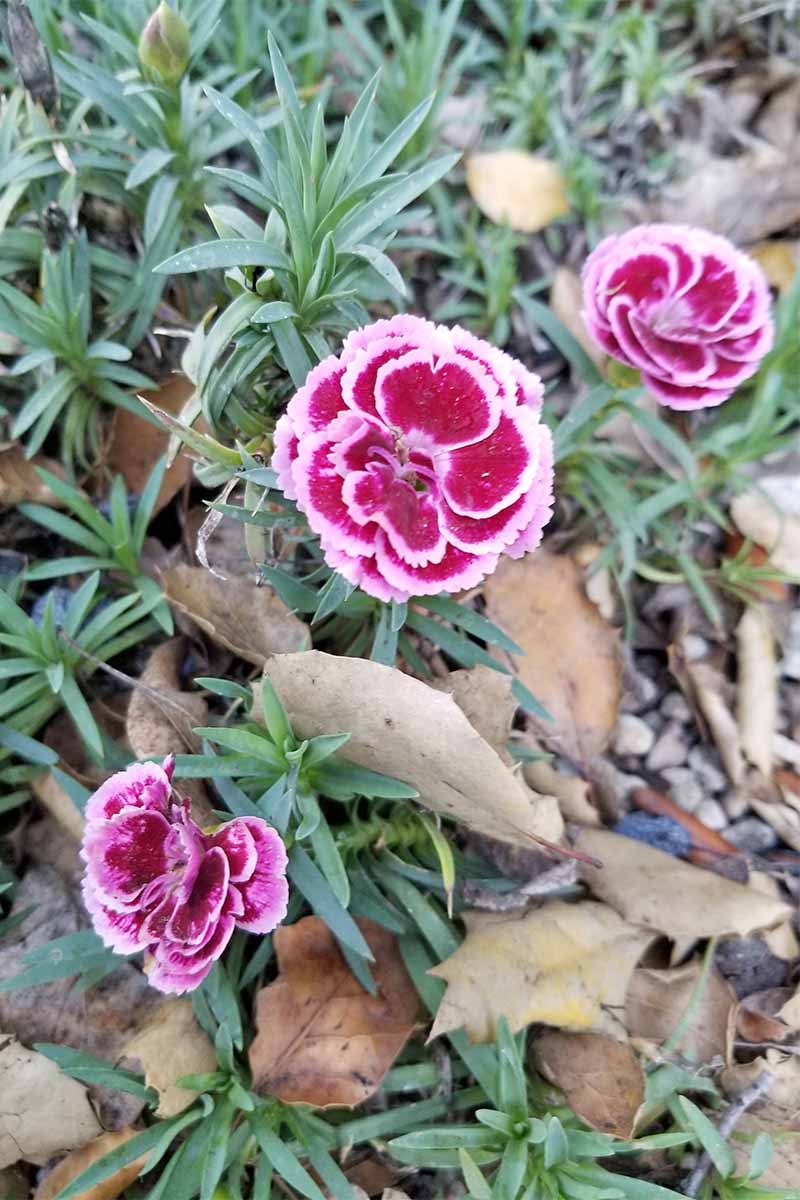
With so much to love, you’re probably eager to learn how to grow these beauties in the garden. Here’s what’s to come:
What You’ll Learn
Let’s dig in!
Cultivation and History
One of the earliest cultivated flowers, Dianthus species have been revered for centuries, and were common in Ancient Greek and Roman times. They were often featured in ornate friezes adorning buildings of importance, and were added to celebratory garlands.
The name of this genus is derived from a combination of the Greek words dios (god) and anthos (flower), or “flower of the gods.”

How they came to be so named is a bit murky, but there are a couple of viable tales to consider.
One myth holds that Diana, Greek goddess of the hunt, blamed a flute-playing shepherd for scaring away her prey. In a fit of pique, she plucked out his eyes, and where they fell, red carnations grew – symbolizing innocent blood.
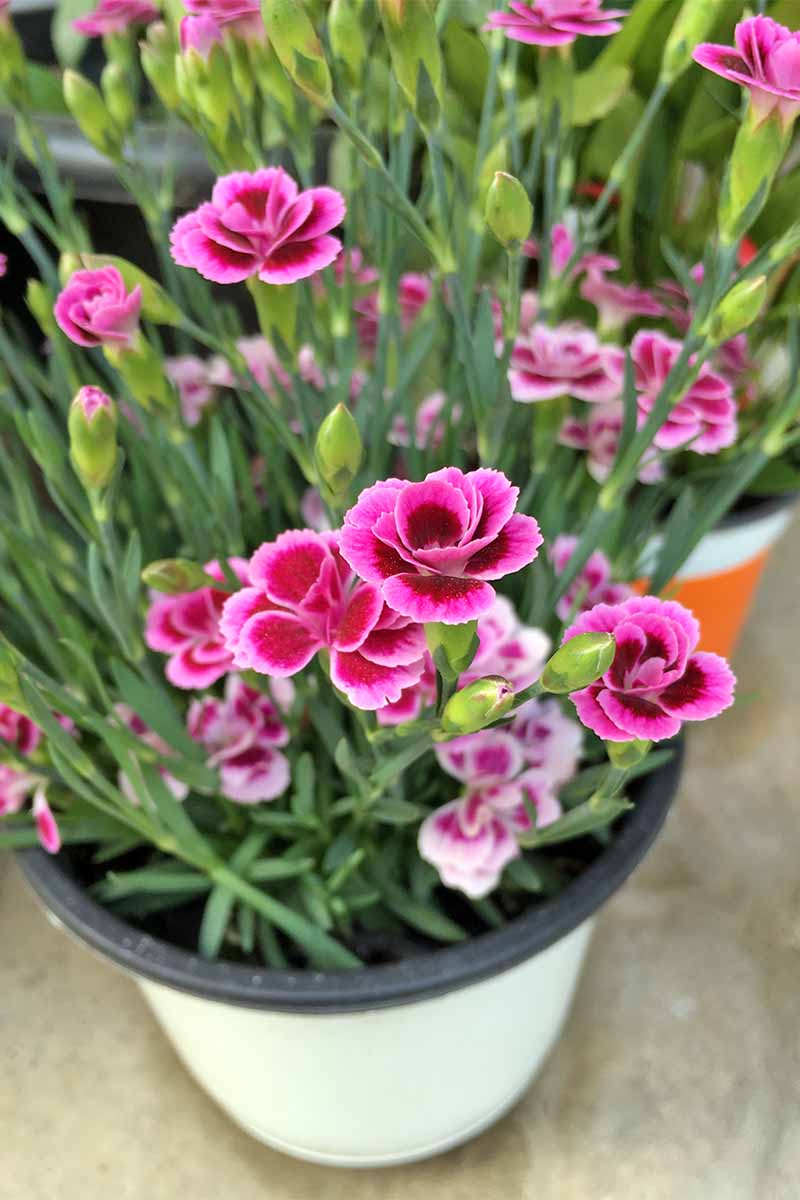
In Christian mythology, it’s said that carnations first bloomed along the Via Dolorosa where Mary’s tears fell as Jesus carried the cross to Golgotha – another reference to the symbolism of innocent blood.
Some of the cultivated flowers within this popular genus include:
- Carnations (D. caryophyllus)
- Cheddar Pinks (D. gratianopolitanus)
- China Pinks (D. chinensis)
- Garden pinks (D. plumarius)
- Large Pinks (D. superbus)
- Sweet williams (D. barbatus)
Pinks and carnations have long been a cottage garden favorite, and are highly popular for use in rockeries. Thanks to their outstanding longevity when cut, and their gorgeous fragrance, they also make an outstanding cut flower for floral arrangements – and carnations are still the flower of choice for boutonnieres.
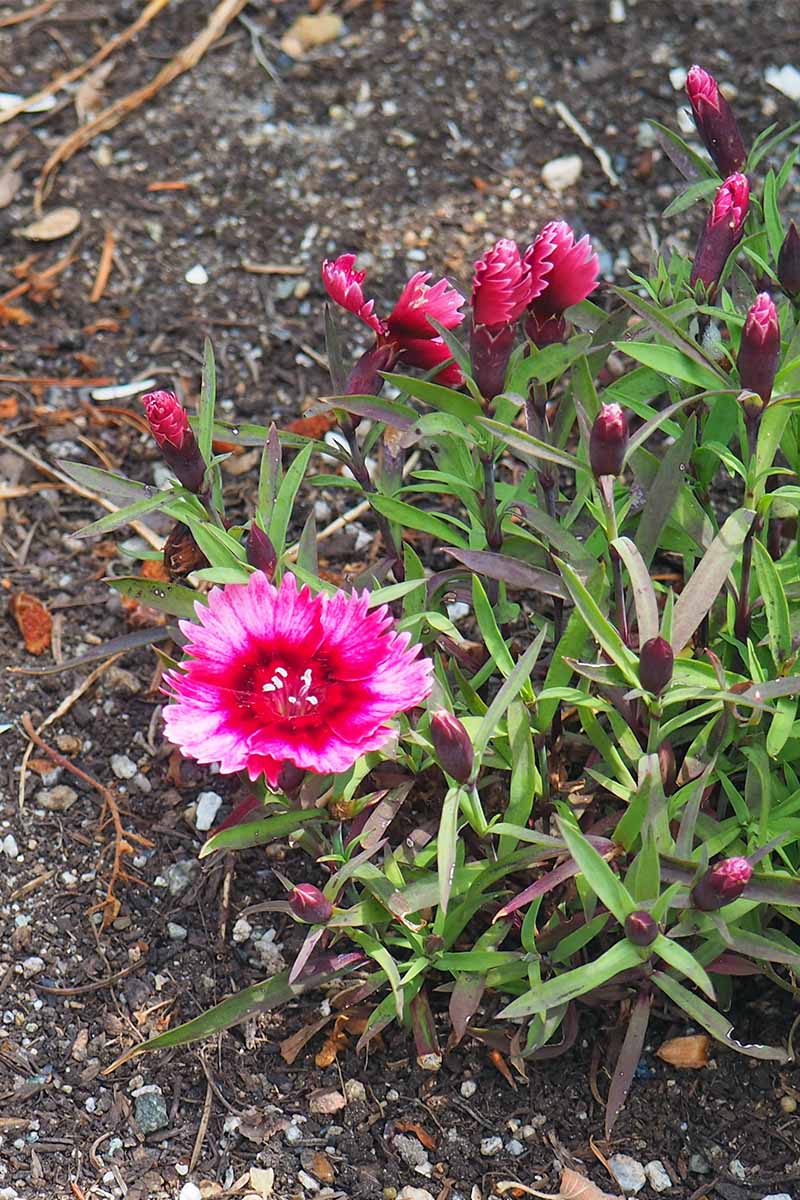
With their many shades ranging from white to pink to red, it’s easy to see why D. plumarius picked up the moniker “pinks.”
As a side note, the verb “to pink” was popularized in the fifteenth century, and means “to finish an edge with a scalloped, notched, or other ornamental pattern.” As if they were trimmed with pinking shears, D. plumaris exhibits delicately notched petals, in addition to a rosy hue.
How to Grow Dianthus Flowers
Hardiness varies between the species, ranging from Zones 3-9, but all are easily grown in the home garden.
If you’re not sure yours will survive the winter in your area, be sure to take some cuttings or start seedlings to overwinter until the next spring. (See Propagation notes below.)
Carnations grow to a height of 24 inches, sweet williams have an upright habit of up to 18 inches, and old-fashioned pinks form mounds that can reach 6-10 inches. Alpine pinks are the smallest, forming mats only 4-6 inches high.
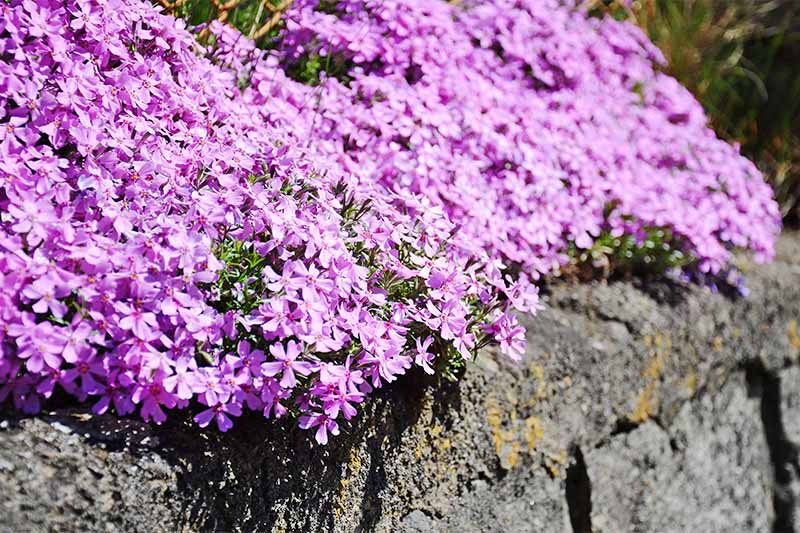
The short, mound-forming pinks make a striking accent at the front of borders, rockeries, and window boxes. Taller sweet williams and carnations can be placed further back in garden beds for an attractive second layer of color.
All like a full sun location where they receive at least 6 hours of sunlight each day, and need well-drained soil. Adequate air circulation is also important.
Before planting, provide them with a rich soil that has 2-4 inches of well-rotted compost worked in to a depth of 12 inches, and reapply a top dressing of compost in spring.
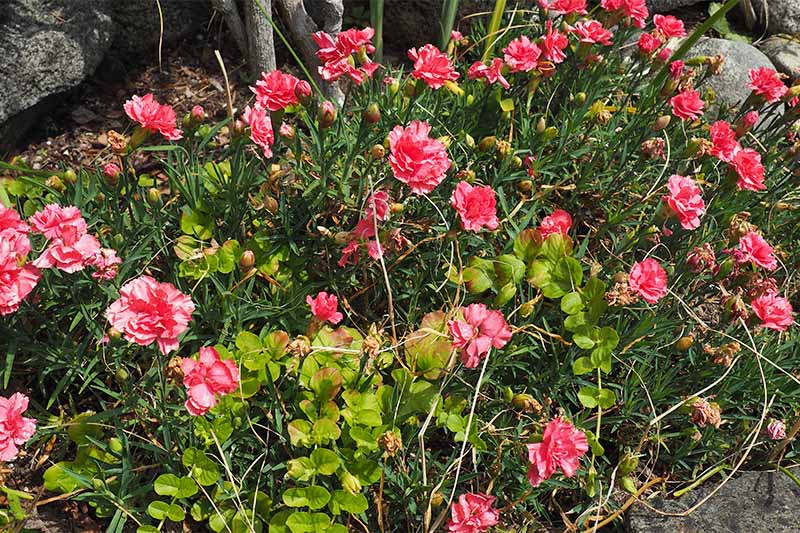
Water new plants weekly. They can be fertilized every 4-6 weeks with an all-purpose liquid fertilizer such as 20-10-20 during the growing season, or apply a slow-release pellet-form fertilizer in the spring.
Pinch or snip off dead flowers to prevent seed formation and encourage additional blooming. At the end of the growing season, cut flower stems back to the ground.
For winter protection, add a 4-inch layer of dry mulch after the first hard frost, and remove it in spring once new growth begins.
Dianthus Plant Propagation
Dianthus can be propagated from seeds started indoors, directly sown into the garden, or grown from stem cuttings.
To plant from seed, begin indoors 2-8 weeks prior to the last frost for your area. Plant in a light, loamy soil mix, sprinkling seeds over the top, and then covering with a light layer of soil.
Cover the container with a cloche or plastic bag to keep the soil moist and warm. Once seedlings have 2-3 true leaves, move into their own pots. Transplant outdoors once they’re 4-5 inches high.
To direct sow outdoors, plant seeds to a depth of 1/8 inch once all danger of frost has passed. Keep the soil moist, and once they have 2-3 leaves, thin to 8-12 inches apart.
To start from stem cuttings, cut away several non-flowering stems from the parent plant just below a leaf joint.
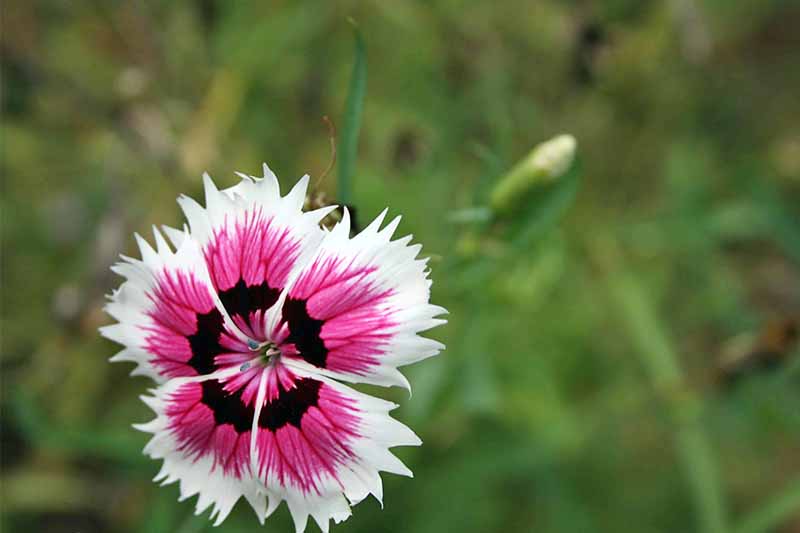
Trim away the lower leaves, leaving 4-5 sets of leaves at the top of the stem. Dip the base into hormone rooting powder, and pot up around the perimeter of a container filled with a light potting soil.
Water, then place in a plastic bag, securing the top with a twist tie. Set in a sheltered spot in the garden that receives morning sunlight, but out of hot afternoon sun.
Stem cuttings should root in about 4-5 weeks. Remove the soil ball and gently separate the cuttings, then pot up into individual containers.
Overwinter in a sheltered spot that is protected from frost and freezing temperatures. Plant out in spring once the soil warms up.
Managing Pests and Disease
New cultivars are bred for disease resistance, and are mostly problem-free.
They don’t like wet feet or damp, humid conditions. Cater to these needs, and they will be well prepared to combat attack.
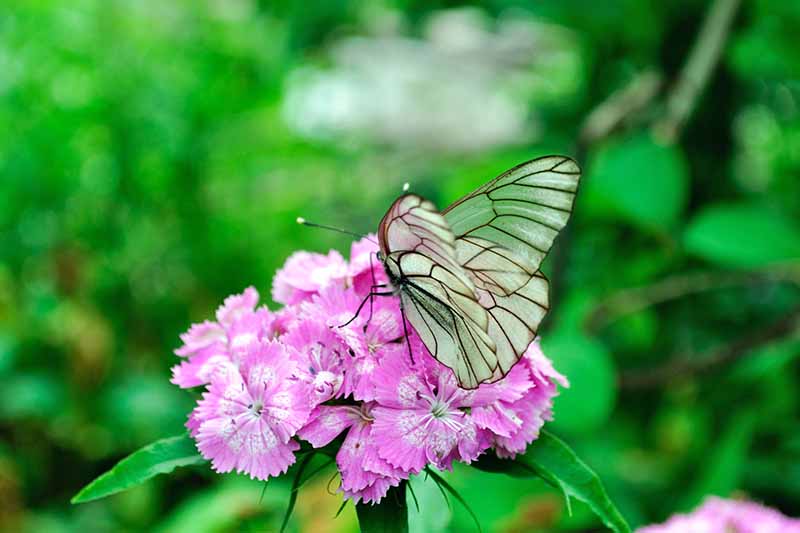
Aphids sometimes feed on the stems and may be easily controlled with a sharp spray of water from a hose, or with ladybugs, which serve as a natural predator.
Carnation flies sometimes lay their eggs on the foliage of carnations, burrowing into the leaves and creating pale “tunnels.” Companion planting with garlic or spraying with a garlic tea will eliminate flies and their larvae.

Rust can be prevented by providing adequate ventilation. Remove and dispose of any leaves infected with rusty or brownish marks on the leaves, or treat with an application of copper oxychloride. Infected plant matter should be thrown in the garbage, not added to the compost pile.
Powdery mildew forms on leaves in warm, humid conditions. Provide proper ventilation and destroy any affected plants, or treat with a benomyl fungicide.
Dianthus Species to Select
For long-stemmed carnations, ‘Cancan Scarlet’ is a good choice for the garden.
100 D. Caryophyllus ‘Cancan Scarlet’ Seeds
Hardy, with a bold fragrance, seeds can be purchased online at True Leaf Market.
‘Telstar’ Dianthus Seeds, in Packages of 100 or 500
True Leaf Market also carries a selection hybrid Dianthus seeds, a cross between D. chinensis (China pink) and D. barbatus – try the dwarf ‘Telstar’ mixed series for continuous, colorful blooms all summer.
‘La France’ Carnation Seeds, available from Eden Brothers
A large variety of Dianthus seeds are also available from Eden Brothers.
‘King of Blacks’ Carnation Seeds, available from Eden Brothers
Try ‘La France’ carnations (D. caryophyllus ‘Chabaud’) for a classic pink version, or ‘King of Blacks’ (D. caryophyllus ‘Grenadin’) for an incredible deep purple.
‘Pink Beauty’ Sweet William Seeds, available from Eden Brothers
‘Pink Beauty’ sweet williams are another lovely option, with clusters of vibrant bubblegum-colored, sweet-smelling flowers.
Quick Reference Growing Guide
| Plant Type: | Herbaceous perennial; a few species are annual | Flower / Foliage Color: | White, lilac, red, and and pink |
| Native to: | Europe, Asia, northern Africa, North America | Tolerance: | Light frost |
| Hardiness (USDA Zone): | 3-9 | Soil Type: | Organically-rich |
| Season: | Late spring to early autumn | Soil pH: | 6 to 7.5 |
| Exposure: | Full sun | Soil Drainage: | Well-draining |
| Spacing: | 6-12 inches depending on species | Attracts: | Bees, beneficial insects, birds, butterflies |
| Planting Depth: | Seeds: surface sow 1/8 inch deep; transplants: same depth as container | Companion Planting: | Varies depending on species, height, and use. |
| Height: | 4-24 inches depending on species | Uses: | Beds, containers, cut flowers, and mass plantings |
| Spread: | 4-18 inches depending on species | Order | Caryophyllales |
| Growth Rate: | Fast | Family: | Caryophyllaceae |
| Water Needs: | Moderate | Genus: | Dianthus |
| Maintenance: | Moderate | Species: | – D. alpinus – D. caryophyllus – D. gratianopolitanus – D. chinensis – D. armeria – D. plumarius – D. superbus – D. barbatus |
| Common Pests: | Aphids, carnation flies | Common Disease: | Rust, powdery mildew |
In the Pink
Colorful, fragrant, and easy to grow, Dianthus cultivars make a delightful addition to the garden or containers.
Give them lots of sunlight, good drainage, and plenty of fresh air for blooms and fragrance all summer.
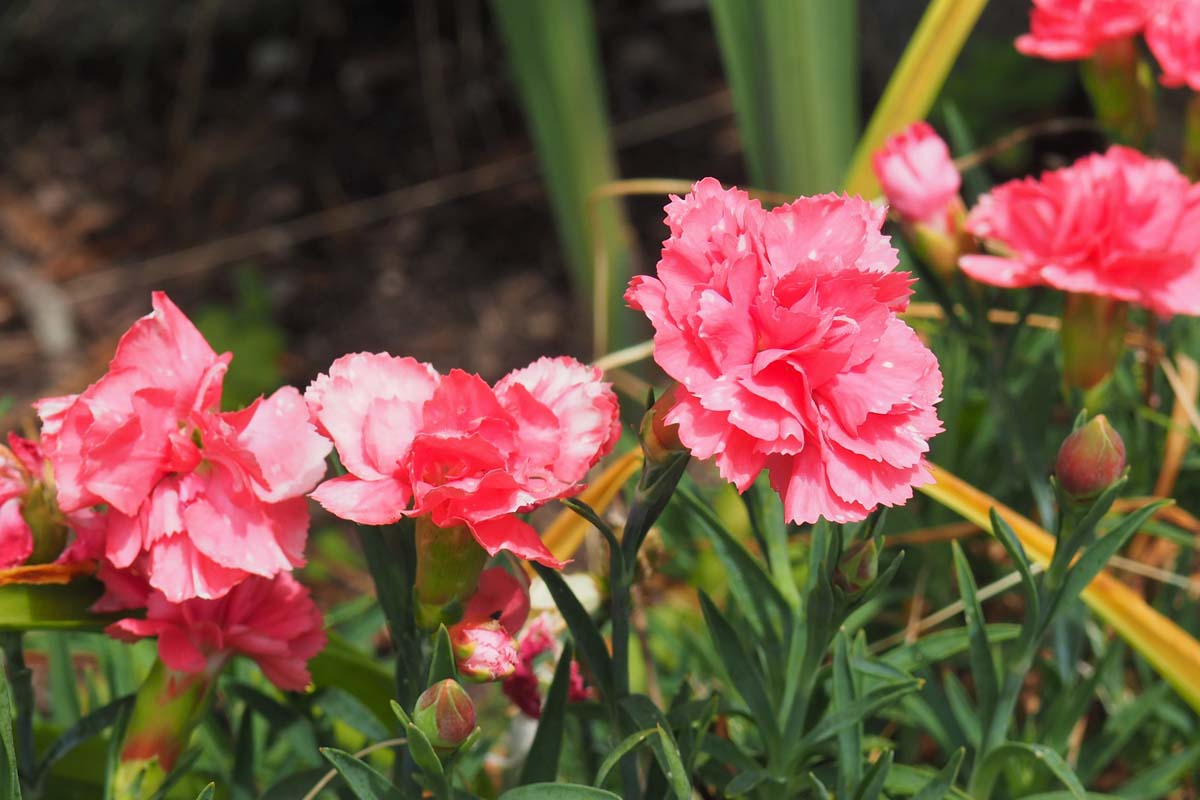
Try a mix of pinks and sweet williams for borders and rockeries, and add some carnations to cut and bring indoors for floral arrangements.
And be sure to check out some of our other Dianthus growing guides such as:
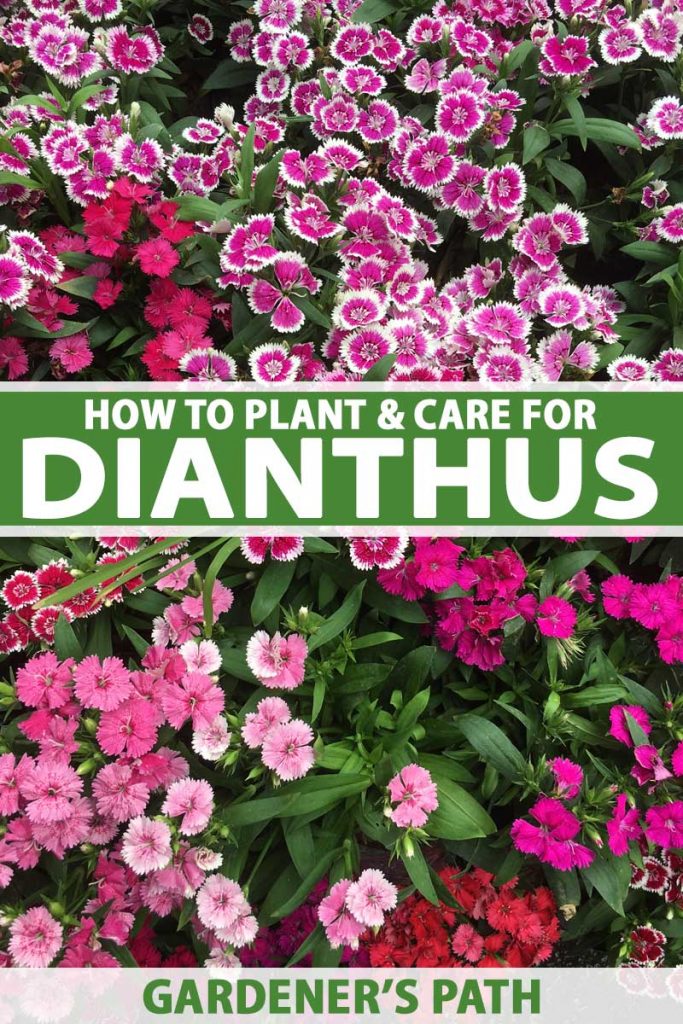
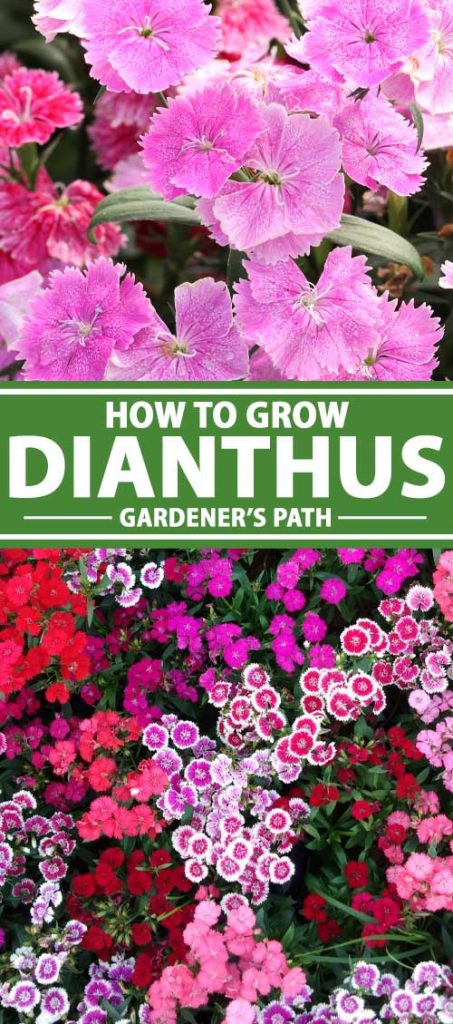
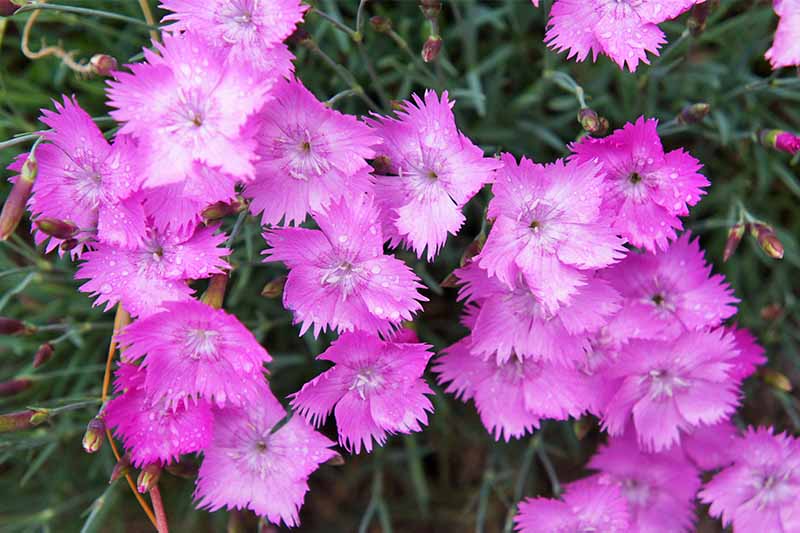
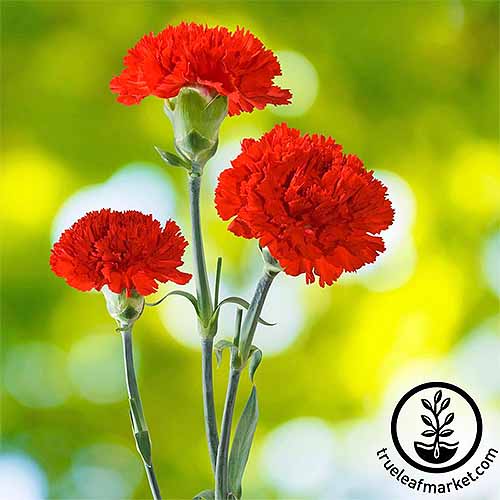
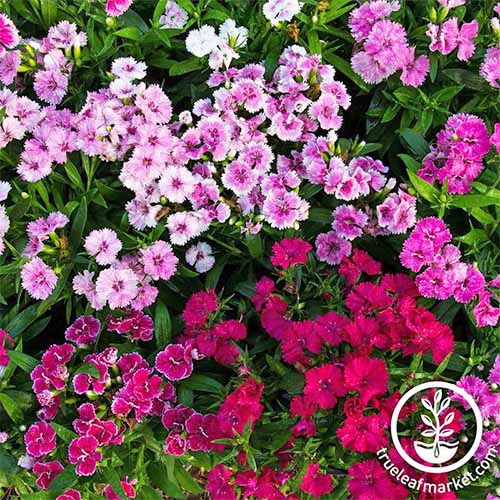
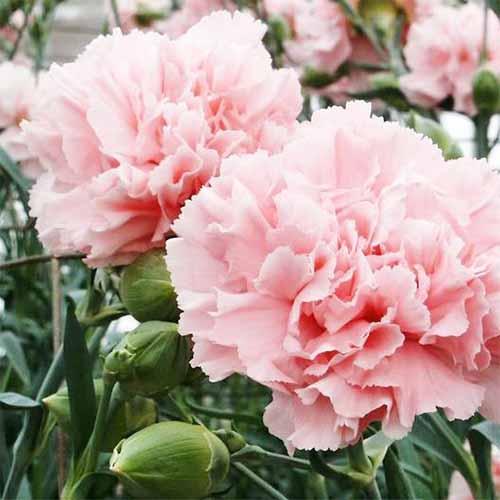
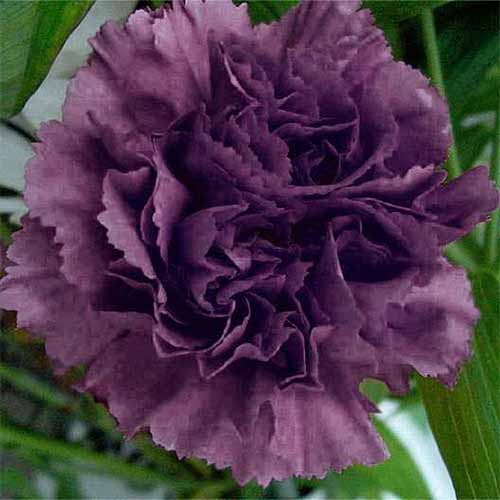



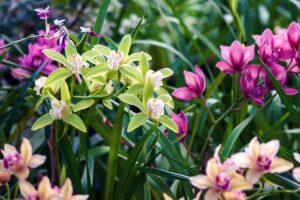
This is an extremely beautiful flower. I really like this flower but don’t know how to take care of it to make beautiful flowers like you.
They are pretty phung, and easy to care for – 6 hours of sun, average water, and regular fertilizing will do the trick!
hi there- i just bought-Rocking Red Sweet William& a Jolt Pink Dianthus-do both come back every year-
Great picks, Gloria. Both of these should return year after year as perennials, as long as you are located in USDA Hardiness Zone 5 and up. The ‘Jolt Pink’ offer excellent drought resistance as well.
I bought a couple of pots of these and have an issue..ugh. they look beautiful until the blooms die then I really don’t know what to do and they then just look awful…do I pinch dead blooms? To Ron stems to a certain spot? Fertilize? Thanks much a Anna
Hi Anna – Yes, when the first flush of blooms are finished, trim the spent flower heads and stems back to the top of the mounding foliage. Rake gently to tidy the mound and apply an all-purpose liquid fertilizer such as 20-10-20.
A second, lighter set of blooms will appear later in the summer. Thanks for asking!
The mat of dianthus is so large now and flowers are faded. Should I cut it back? Will it flower again?
Hey LeVaun – yes, your mat of spent flowers can be cut back.
Shear the entire mat to remove the flower stems and the top 1/2 to 1 inch of foliage. Cutting back will encourage more flowers, but the amount of rebloom depends on the cultivar.
After shearing, the plants will also benefit from an application of a balanced, water-soluble fertilizer, such as 10-10-10.
Thanks for asking!
Do you have any suggestions on why a ‘pink’ may fail to flower at all, whilst the one growing right next to it is happily flowering away, as are others in the garden? It is an unknown variant but both are a low clump forming type that have been in the garden for many years. The plant is extremely healthy looking but has refused to flower for a few years now.
It could be that the one clump of pinks has simply become old and flowered itself out, Jane. There are a few of things you can try. The first is to apply a “bloom booster” fertilizer, which has higher levels of phosphorous for improved color and flower yield. Although, if your plants aren’t setting any buds at all, this will be ineffective. The second is to cover the center of your mound, and around the mound, with rich compost, covering the base of the shoots to develop new roots. Leave in place until early spring then divide into quarters and… Read more »
Many thanks for the suggestions Lorna. I shall certainly give them a try. The plant looks lovely but with no buds at all so dividing/cuttings would be the best bet.
I just purchased a Barbarini Red Dianthus. One site said it is a biannual and another site said it is an annual. I thought I was purchasing a perennial. Can you help?
Hey Kim, according to the grower’s website, Barbarini Red (D. barbatus) or wild Sweet William, is a biennial. It flowers well in the first and second year then sets seed, after which the plant dies. However, Sweet William self-seeds readily. In the second year, deadhead flowers to encourage more blooming, but leave some early flowerheads on the stem to set seed. In fall when the seeds are ripe (the small pods will open), sprinkle seeds generously around the base of your plants. The following spring, remove old plants and leave the new seedlings in their place or transplant as desired.… Read more »
How do I separate dianthus to plant it as a second plant
Hi EC,
Early spring is the best time to divide, after new growth has emerged but before flowering.
To divide plants, use a clean garden knife or spade to cut through the stems and root mass, separating into halves or quarters as desired.
Lift sections, transplant, and cultivate as suggested in How to Grow. Be sure to add some fresh soil or compost to the host plant site after dividing.
You can also easily start new plants with stem cuttings, as outlined in the Propagation section above.
Thanks for your question.
My plant is looking sick. The leaves are turning a pale tan yellowish color with some brown. Any idea what is causing this? Still has some blooms on it.
There could be a few reasons for yellowing and dieback Pamela…
Carnation fusarium wilt is a disease that causes stems to wilt and leaves to yellow. Unfortunately, advanced stages require plants to be removed and destroyed. And it’s more prevalent in soils heavily amended with peat moss or coconut coir, if that applies to your garden soil.
But it could also be sap-sucking pests like aphids or spider mites. If a close inspection reveals these insects, use a blast of water from the garden hose to remove them.
Hope it’s the pests and not disease – good luck!
Can they be a border plant?
They make a charming border Jackie! After flowering, deadhead and trim to tidy plants and encourage a second flush of flowers.
Hey so I bought a house and it’s got a variety of pink dianthus that is a double flower. It comes back every year. I haven’t separated it or done alot due to fear of killing them. I have a big mound of them with brown woody stems on the center after not doing much other than trimming them at the end of the year. Is there something I should do to help with this? I keep reading to leave the woody part alone but after several years I am at a loss of what I should do to help… Read more »
Hi Kelly, your plant sounds like a beauty, but if it’s been a few years and the plant’s center isn’t reviving, it’s time to divide and discard the dead parts.
If they’re blooming already, wait until fall to divide then follow the steps outlined in the Root Division section of our guide on How to Grow and Care for Carnations.
Division is the best way to rejuvenate plants, and you’ll get a few new plants as well!
Thanks for asking!